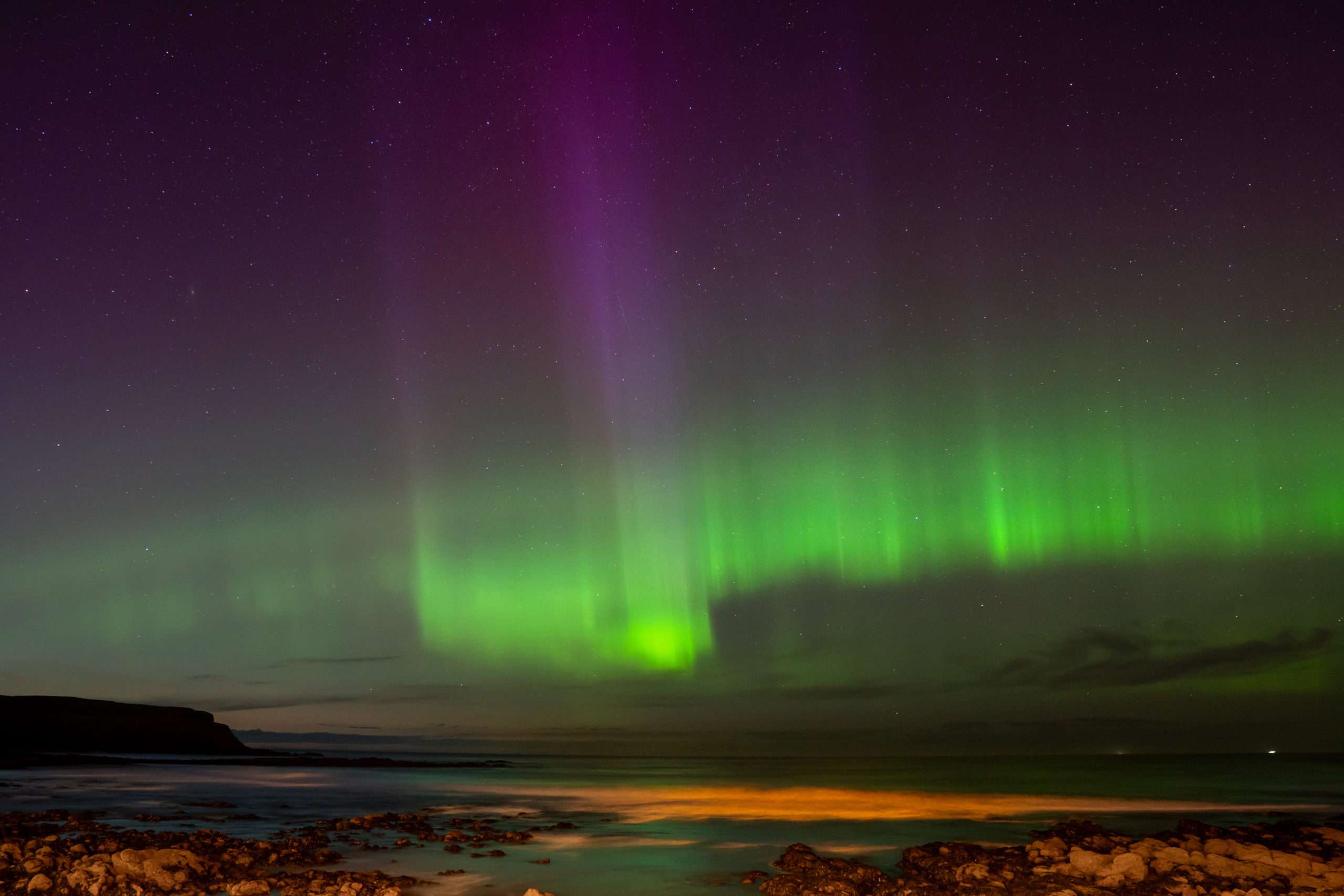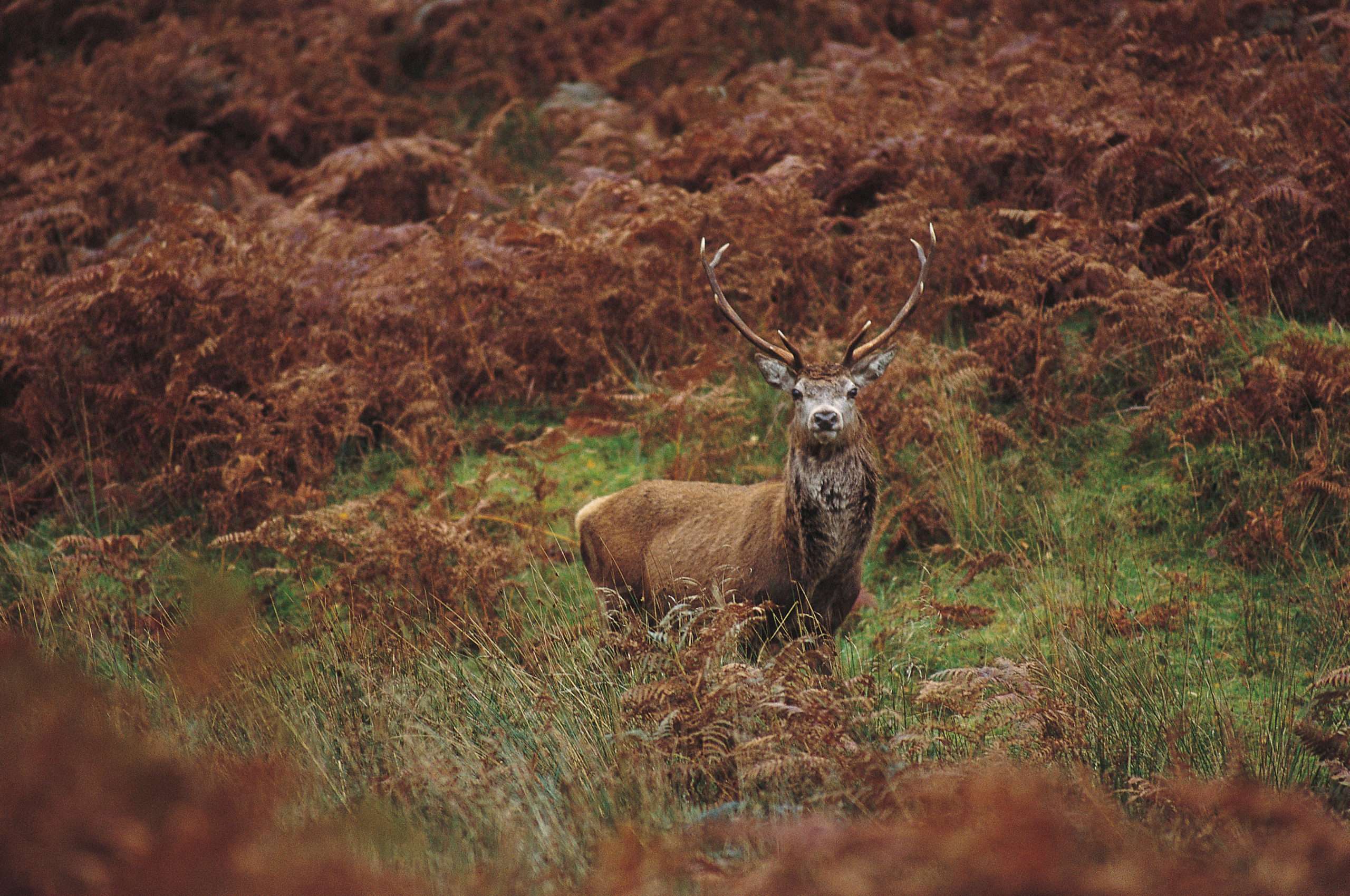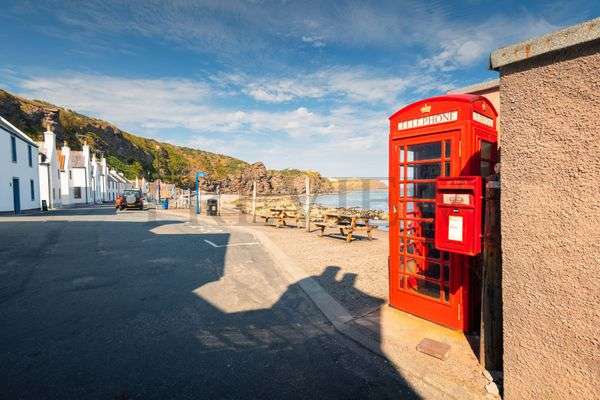Scotland’s landscapes are home to an incredible array of wildlife that can be found in all nooks, crannies and corners of the country. This autumn, there is no better time to start planning a feel-good break in the great outdoors. For those looking for a holiday where it is possible to bask in glorious autumnal colours, go animal-spotting, and experience all that nature has to offer, Scotland is the perfect place.
Autumn nights draw in

Northern Lights and stargazing-Scotland has some of the largest expanses of dark sky in Europe and while the country is famous for its beauty during day, the twilight hours create a new air of mystery. The autumn and winter months in Scotland offer the perfect conditions to watch the night sky so there is no better time to enjoy a stargazing holiday. Visitors might be lucky enough to see the Northern Lights or Aurora Borealis (or ‘Mirrie Dancers’ as they are known in Scotland). Some options for a break include:
Pennan, Aberdeenshire-Pennan is a tiny seaside village located by a stunning backdrop of Aberdeenshire cliffs (famous for being where a lot of the 1983 film Local Hero was made). When the days get shorter, and the nights get darker – that’s when the magic happens. Millions of lights seem to dance across the sky and the stars illuminate the night in an array of colour.
Kirkcudbright, Dumfries and Galloway-Not only Britain’s forest largest park, Galloway Forest Park was also the UK’s first Dark Sky Park. Stretching across the southwest of Scotland, it is home to glens, lochs, hills and only a few buildings which means it has very little light pollution. On clear nights it is possible to observe thousands of stars, making it one of the best places to stargaze in Europe. In nearby Kirkcudbright (which is also home to the Dark Sky Planetarium), head into Galloway Forest Park to see the skies.
North Uist, Outer Hebrides-With little light pollution, the Outer Hebrides is one of the best places to catch the Northern Lights. With the right weather conditions, each island can provide a mesmerising dancing display of the Aurora Borealis at the right time. Many astronomical sights can be seen through the naked eye including the Orion Nebula, the Milky Way and the Great Andromeda galaxy. During the winter it gets dark late afternoon, giving visitors a great opportunity to not only watch out for the Northern Lights but just look up and stargaze. Each year in February/March, there is a Dark Skies Festival which features theatre, live music, film, visual art, food, astronomy talks, and stargazing.
Orkney & Shetland-Looking for a real adventure? A stay in the northernmost regions of the British Isles to possibly witness the Aurora Borealis will feel like a world away. Stay at the Keeper’s Cottage at Sumburgh Lighthouse. The Lighthouse is the oldest in Shetland, and perhaps the most well-known. Rising above the precipitous Sumburgh Head cliffs at the southernmost point of mainland Shetland, the Lighthouse is visible from land and sea for miles around. There’s no doubt that Orkney is one of the best places in the UK to try and catch a glimpse of them, with low levels of light pollution and unobstructed views.
‘Leaf-peeping’
Scotland is quite a special place to visit in the autumn as the beautiful reds and oranges of the season appear. ‘Leaf-peeping’ has become a trend of the last few years, with people travelling to destinations only to see the fall foliage. Scotland should be at the top of the list for leaf-peepers. Places to see include:
The Hermitage, Dunkeld
Roslin Glen, Midlothian
Lochgilphead, Argyll & Bute
Glenmore Forest, Cairngorms
Crathes Castle, Aberdeenshire
Binning Wood, East Lothian
Falls of Clyde Wildlife Reserve, Lanarkshire
Wildlife spotting

Red Squirrels-Best spotted in the winter months of December – January when their vibrant reddish coats will stand out against the snow. Much smaller than their grey cousins, the fluffy red squirrel is an elusive addition to Scotland’s forests and woodlands. The UK has around 160,000 red squirrels, and approximately 75% of them live in Scotland’s woodlands, parks and gardens. To find these beautiful little mammals, visitors can keep an eye out for their red coat during a walk in Britain’s largest forest park, Galloway Forest Park. Sightings are also common when following the Devilla Forest Red Squirrel Trail, as the Scots Pine trees are a perfect habitat for red squirrels. The Scottish Wildlife Trust is working with NatureScot, Scottish Forestry, RSPB Scotland, Scottish Land & Estates and the Red Squirrel Survival Trust to protect these adorable creatures by asking people to report sightings.
Red Deer-Red deer are best spotted during the autumn months of September – November. One of the most iconic animals associated with Scotland, the red deer is the UK’s largest land mammal and can be spotted in almost every region in the country. These stunning animals can be seen in locations including the Isle of Arran, Isle of Jura, Lochaber, Torridon, Cairngorms National Park, and Queen Elizabeth Forest Park. Visitors can stop by Aberfeldy, Perthshire and visit the Red Deer Centre to get up close and personal with these large mammals and learn about their unique traits. If after a more Christmas vibe, did you know the Cairngorms National Park is home to Britain’s only free-ranging herd of reindeer?
Seals-Seals are best spotted during the autumn months of September – November but can also be spotted during the summer. Seals are very common inhabitants off the coastlines of Scotland. Visitors might be lucky enough in the autumn months to spot fluffy grey seal pups too. These adorable creatures can be spotted all across Scotland, but in particular in the Moray Firth, Firth of Tay, Ythan Estuary, and on the Isle of May. Basking Shark Scotland runs Seal and Lagoon tours throughout the year from Oban, Tobermory, or Isle of Mull, where visitors can swim in crystal clear water alongside seals. Basking Shark Scotland also runs various other tours to allow visitors the chance to enjoy the special wildlife in Scotland, including basking shark tours (of course!), snorkelling experiences, scuba diving trips, and more.
For more holiday inspiration and ideas, visit www.visitscotland.com

